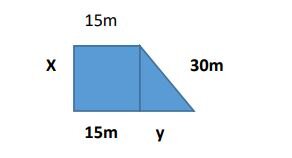Hi! I tried to do this exercise but I don't know how to do it. Any ideas about how to do it or where I can learn to do that?
In the design of the building, the available surface must be used to the maximum. Target space is a plant in
trapezoidal shape, which has the following dimensions: one of the parallel walls has the dimension of 20m of
length and oblique wall is 40m. What dimensions should the plant have to make its area be
maximum?

In the design of the building, the available surface must be used to the maximum. Target space is a plant in
trapezoidal shape, which has the following dimensions: one of the parallel walls has the dimension of 20m of
length and oblique wall is 40m. What dimensions should the plant have to make its area be
maximum?

